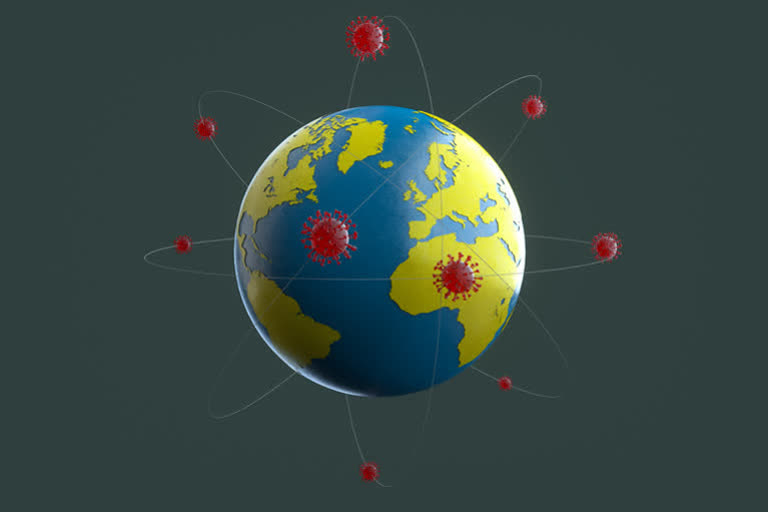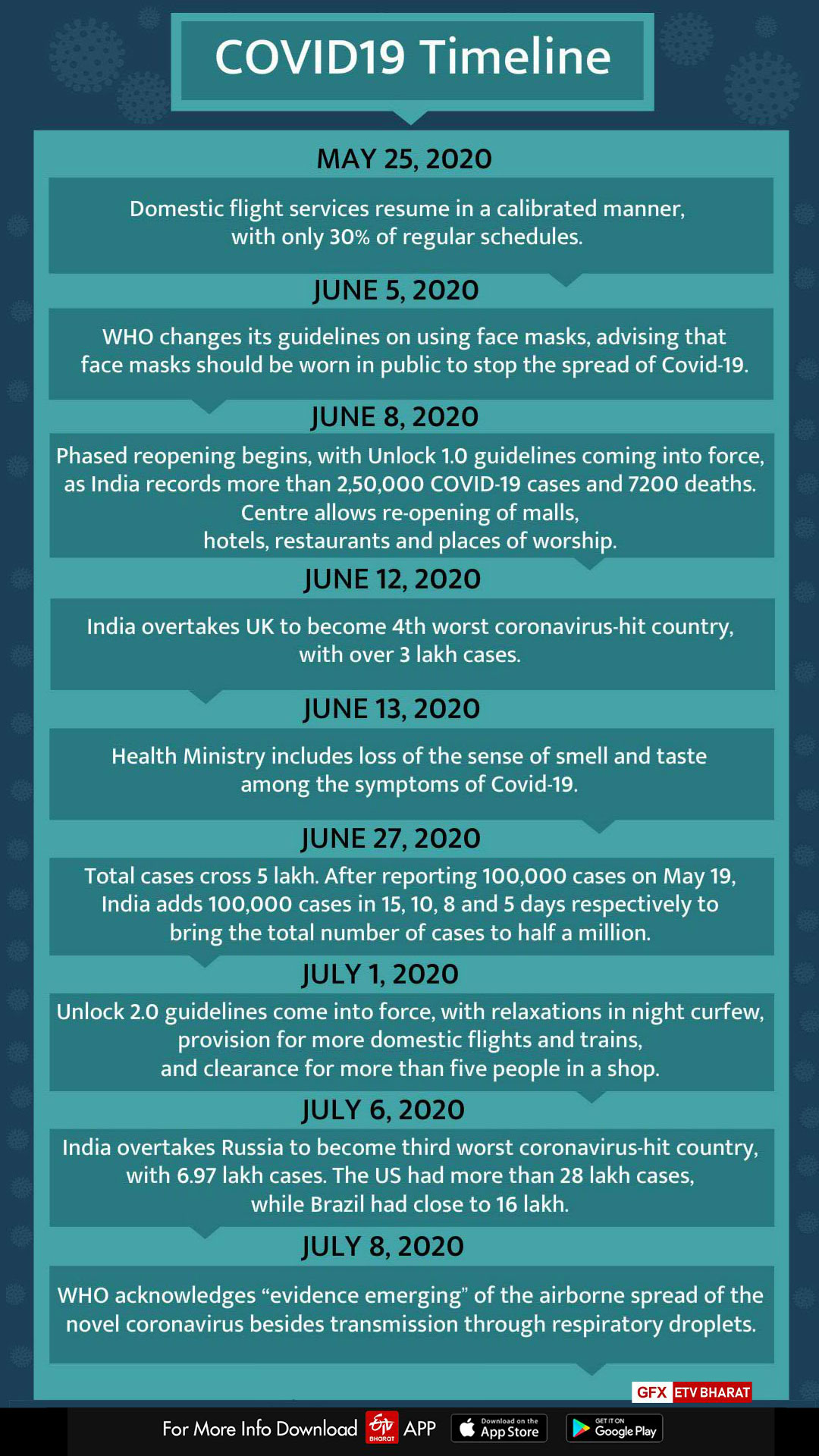Hyderabad: In March 2020, India had just 57 laboratories capable of conducting Covid-19 testing using Real-time Polymerase Chain Reaction (RTPCR), while an additional 56 laboratories were permitted to collect samples (swabs & viral transport media) and transport them to the closest testing centres.
At present, there are 2,425 laboratories in India that conduct Covid19 testing, amongst them, 545 are government and 844 are private laboratories authorised to conduct RTPCR tests. There are also 900 testing facilities that use the True Nat platform and 132 centres that conduct Cartridge-Based Nucleic Acid Amplification Tests (CBNAAT).
Also read: How consumer tech evolved during Covid-19 lockdown in India
Samples
On March 22, 2021, India tested 9,67,459 samples when compared to March 6, 2020, wherein just 4,058 samples were tested for Covid19. Overall, Covid 19 tests conducted in the past year totalled 23,54,13,233.
Vaccines
Coming to the case of vaccines, India didn't have any as of March 2020, however at present India has given emergency approval for the use of Covaxin and Covishield. A total of 4,84,94,594 frontline and healthcare workers, senior citizens and people aged above 45 years with co-morbidities have been vaccinated.
Sanitisers
India in March 2020, had asked all distilleries to manufacture sanitisers and have asked states to waive 300 per cent excise duty on ethanol for the purpose. At present, with an oversupply of sanitisers and distilleries, there is no longer a strong business proposition. Earlier, India had banned the exports of medical clothing and face masks last year. As of now, the ban has been lifted and even N-95 masks have been allowed to be exported freely.
Also read: Online Mindfulness May Boost Mental Health During COVID Pandemic
A glimpse of one year of Covid - from Lockdown to Vaccine
The first case detected in Kerala
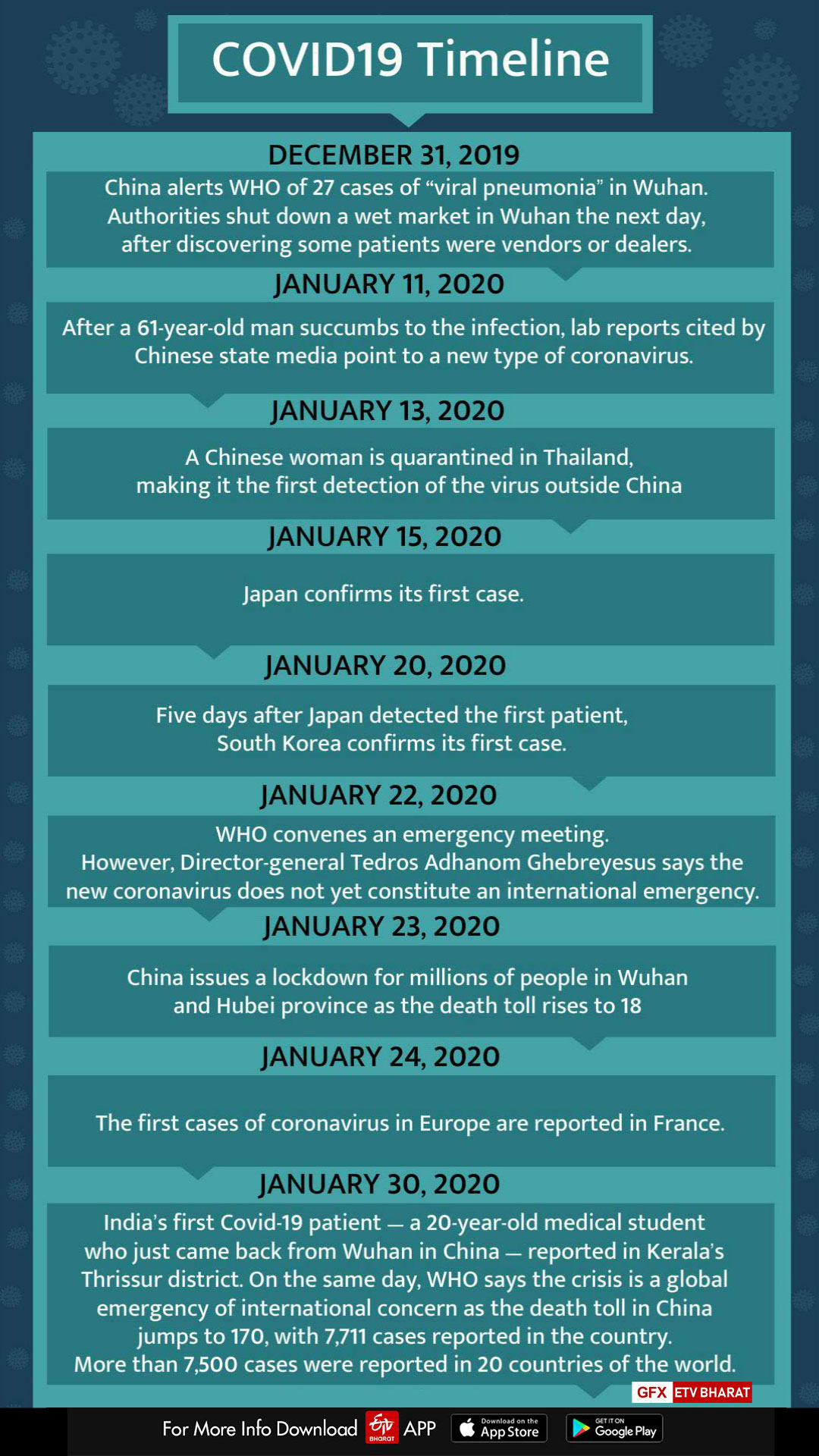
The first coronavirus case was detected in Kerala on January 30, 2020, by some Covid positive students who had arrived from Wuhan in China. On March 4, twenty-two cases were found in India for the first time, out of which 14 were Italian tourists. The first death due to coronavirus was recorded in the country on March 12, 2020.
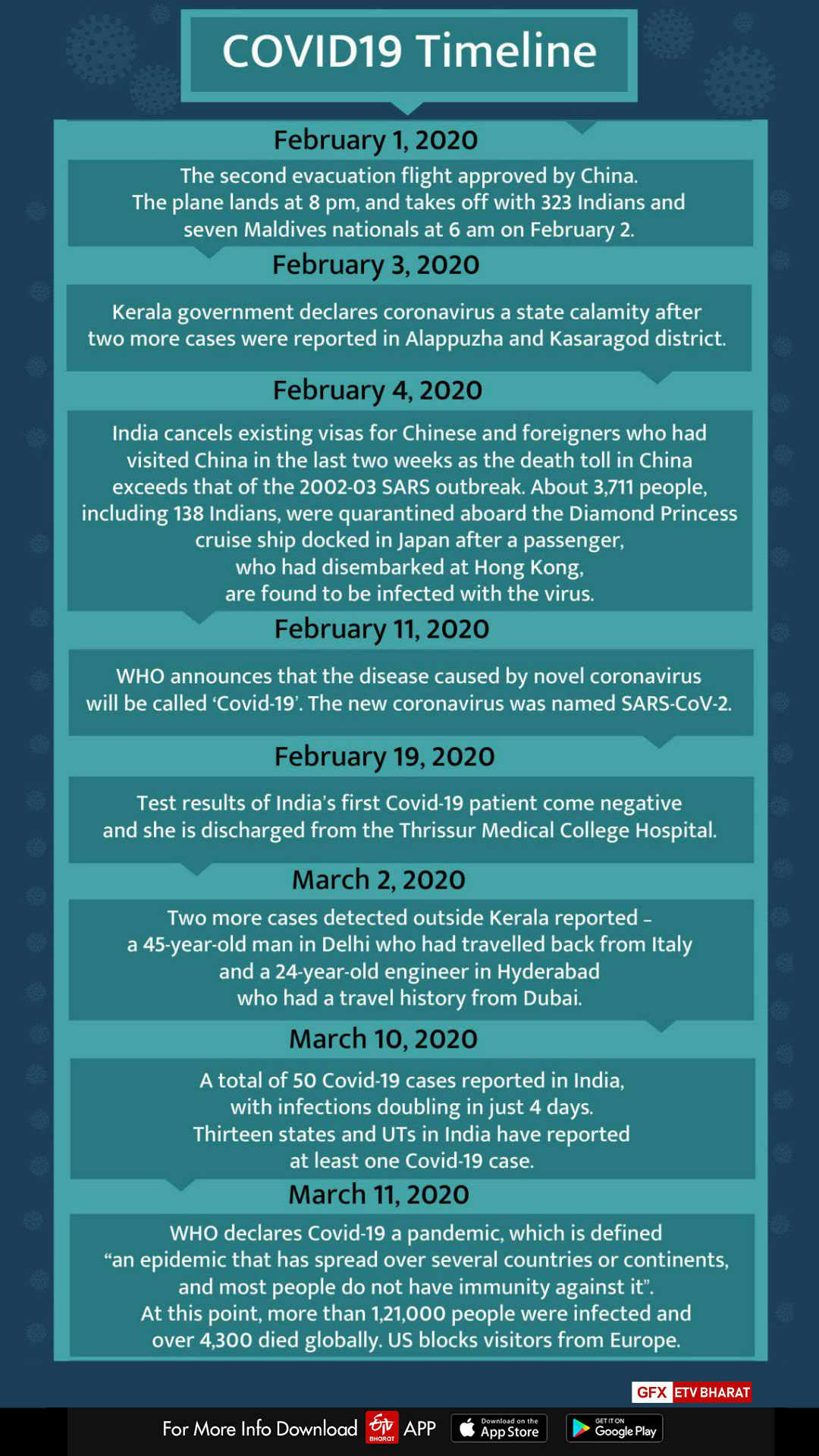
March turned to be super spreader month
The return of a spiritual leader to the Anandapur Sahib in Punjab, having toured Italy and Germany between March 10 and 12 turned out to be the first major case in India. While 27 cases were detected and 40,000 people from 20 villages were already quarantined.
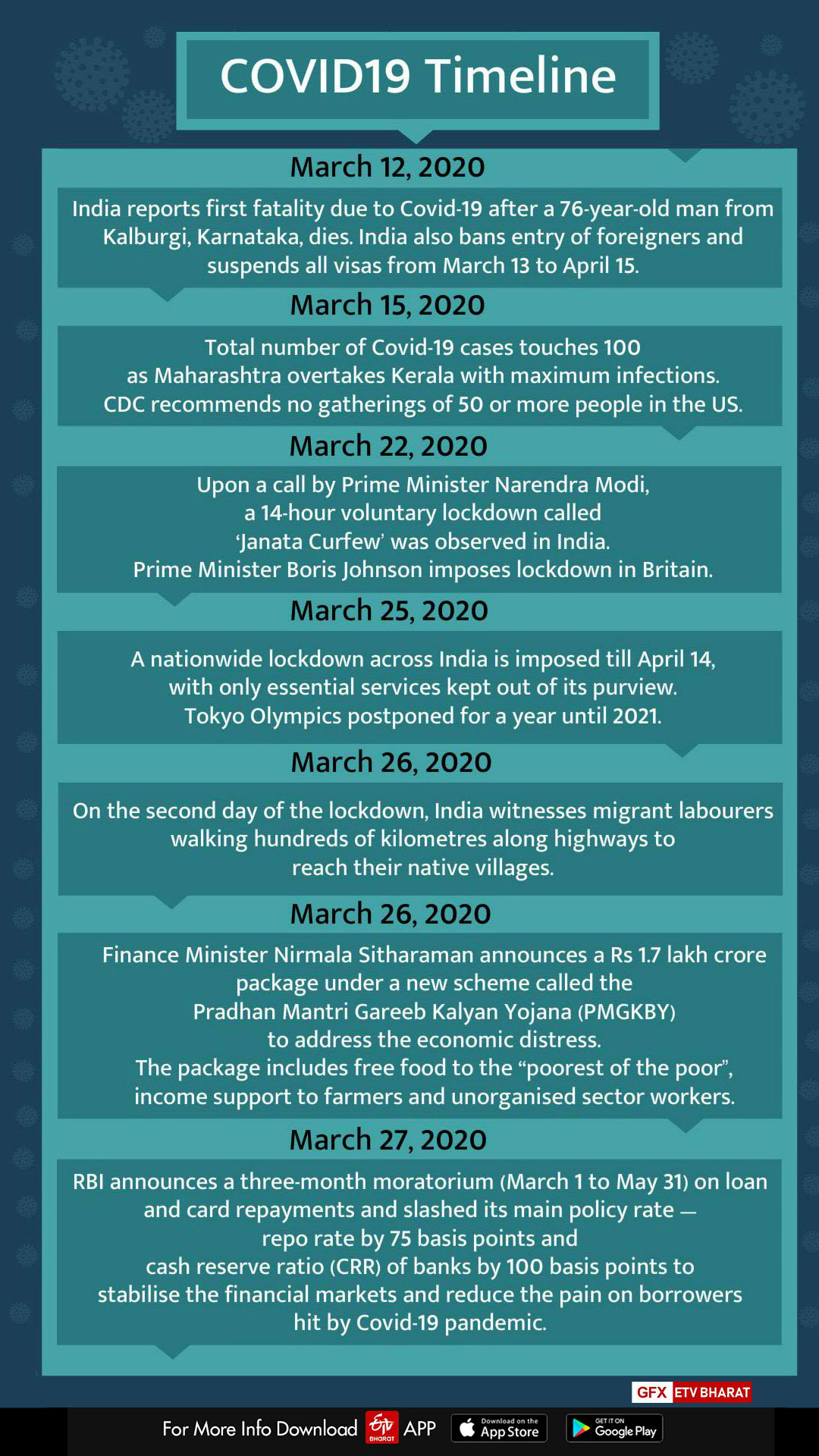
Also read: Brazil second nation to top 3,00,000 COVID-19 deaths
Lockdown announced on March 25
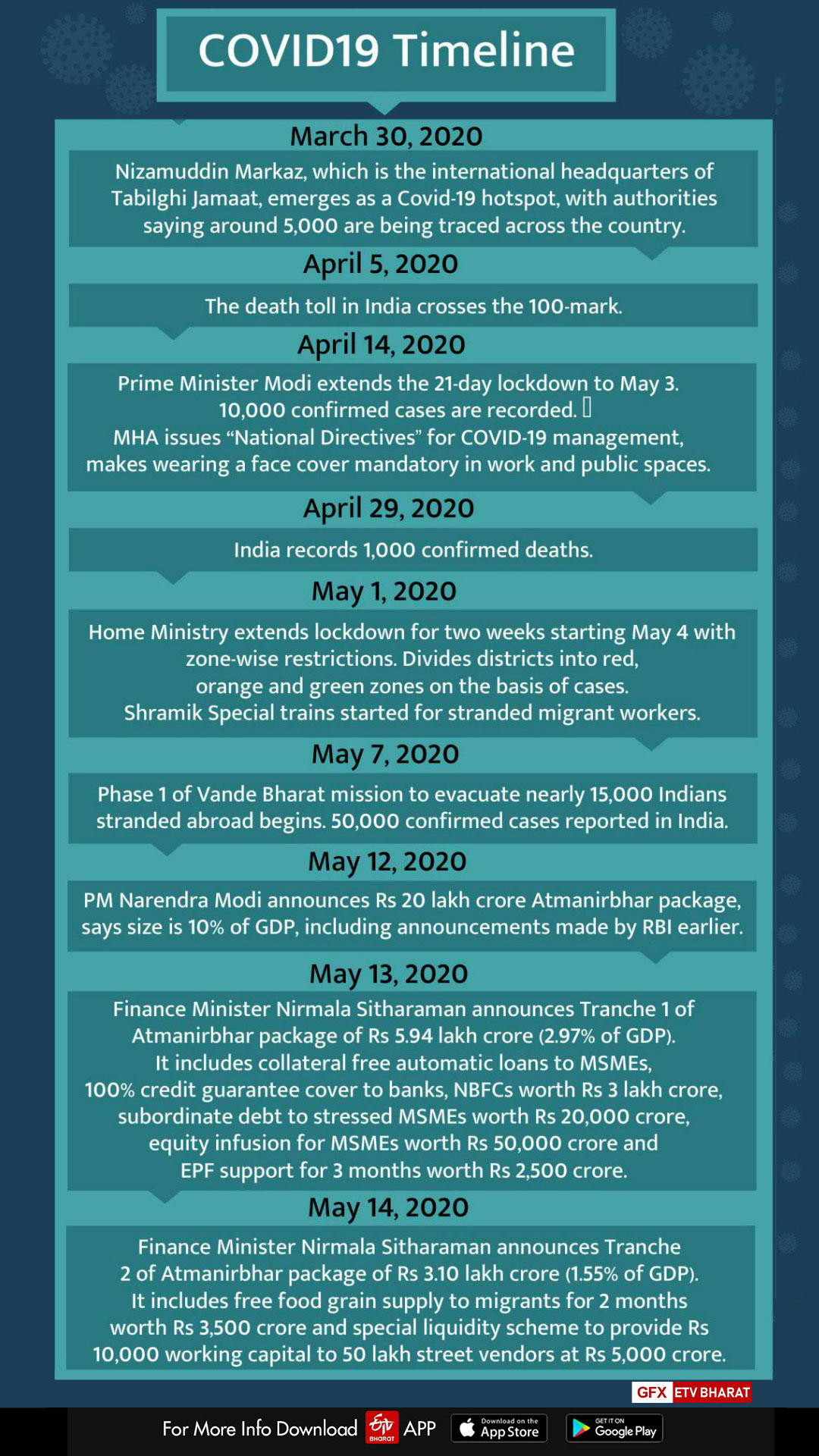
With the situation turning out to be serious, the Centre announced a lockdown on March 25, 2020. By March 31, around 47 deaths were reported and 1403 people were infected by the deadly virus. Even the Government then had no idea that the lockdown would be extended beyond and that there would be a surge in the cases.
April: The number of patients increased 23 times

Following the Tablighi Jamaat congregation, around 4129 cases were found to be directly related to the event. This led to an increase in the number by 23 times in April when compared to March. On April 14, over 1463 corona positive patients and by April 30 around 1901 corona positive patients were diagnosed in India. By April end, the death toll rose to 1075.
Also read: Court insists on Covid report for Kumbh
May: More than a hundred deaths for the first time, one lakh cases
In spite of the lockdown, the Covid19 cases surged in May. On a daily basis, 6000 to 7000 cases were reported. On May 5, more than 194 patients lost their lives due to the deadly pandemic. Later on May 19, more than one lakh patients were diagnosed Covid positive after a 110-day span. On May 31, the lockdown ended and unlock 1.0 was announced, with a maximum of 8380 cases registered in that month.
June: Infection increased with Unlock
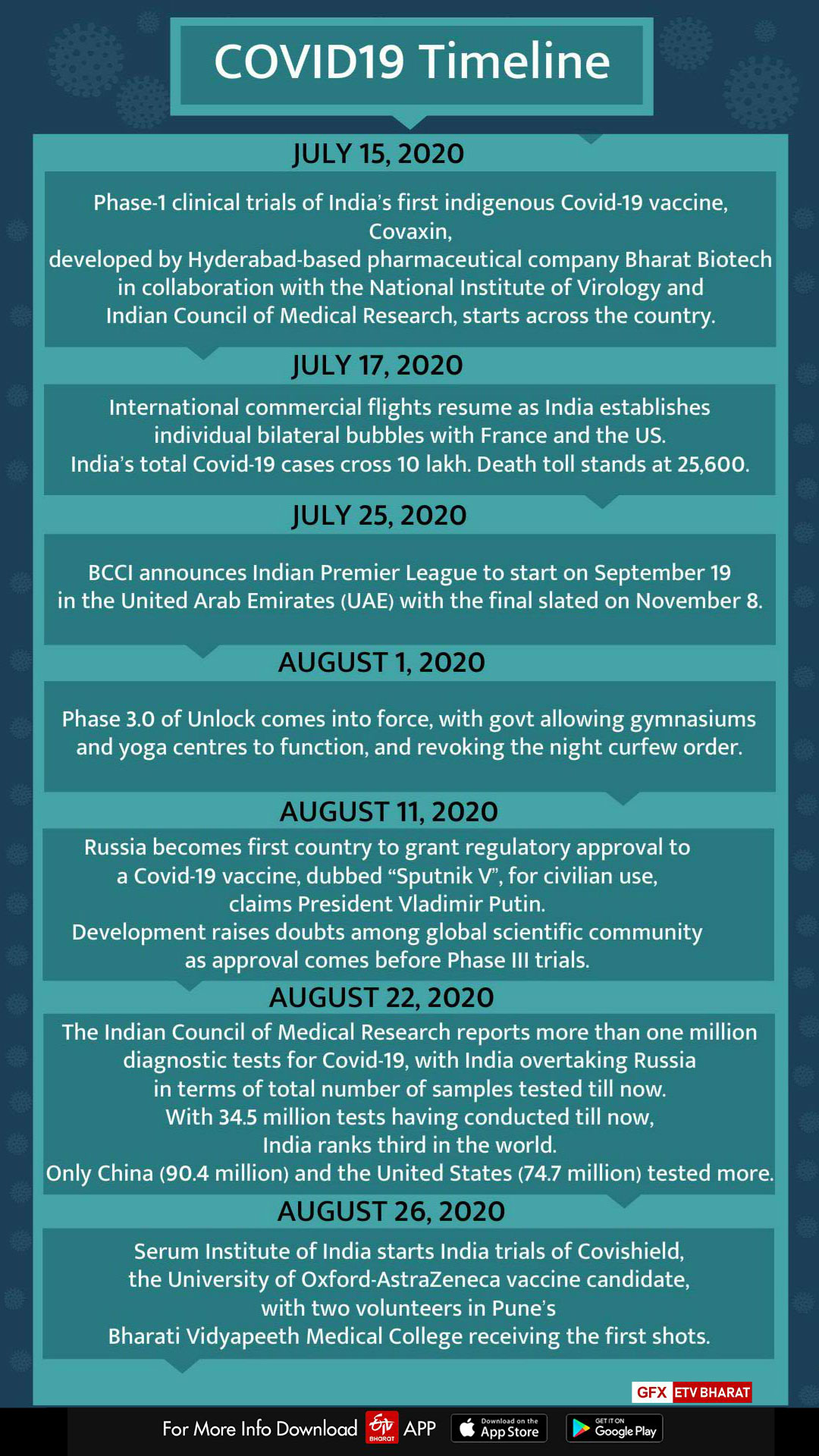
With Unlock 1.0 being announced, 8392 cases were recorded initially, followed by 18,522 cases being reported on a single day by June 30. The death toll also rose to 230 on June 1 to 418 daily by June 30. In the unlock phase, the opening of malls, restaurants and religious places was announced.
Also read: Watch: A year since COVID-19 forced the Olympics to postpone
July: New cases increased three times daily
Amidst fears of rising cases during the rainy season, the total cases surpassed 1 million on July 17. These included 2.75 lakh cases in Maharashtra and 11.6 lakh cases in Delhi. Also,18,653 new cases were reported on July 1, and it increased nearly 3 times to 52,123 by July 31. On July 23, alone around 1129 deaths were reported for the first time in India.
August: 20 lakh cases, deaths increase by 50%
In August, around 19,87,705 cases of coronavirus were reported and 28,859 deaths were recorded with 54,735 cases registered on August 1st and 78,761 cases registered on August 31. On average around 800-900 deaths were recorded daily.

Also read: Health experts urge COVID appropriate behaviour as new cases mount
September: 33 thousand deaths, close to one lakh cases daily
The worst phase of COVID cases in the country was reported with cases touching 70 thousand to around one lakh daily. A record 97,984 cases were reported on 17 September, with the death toll touching 97,497.
October: Deaths exceed one lakh
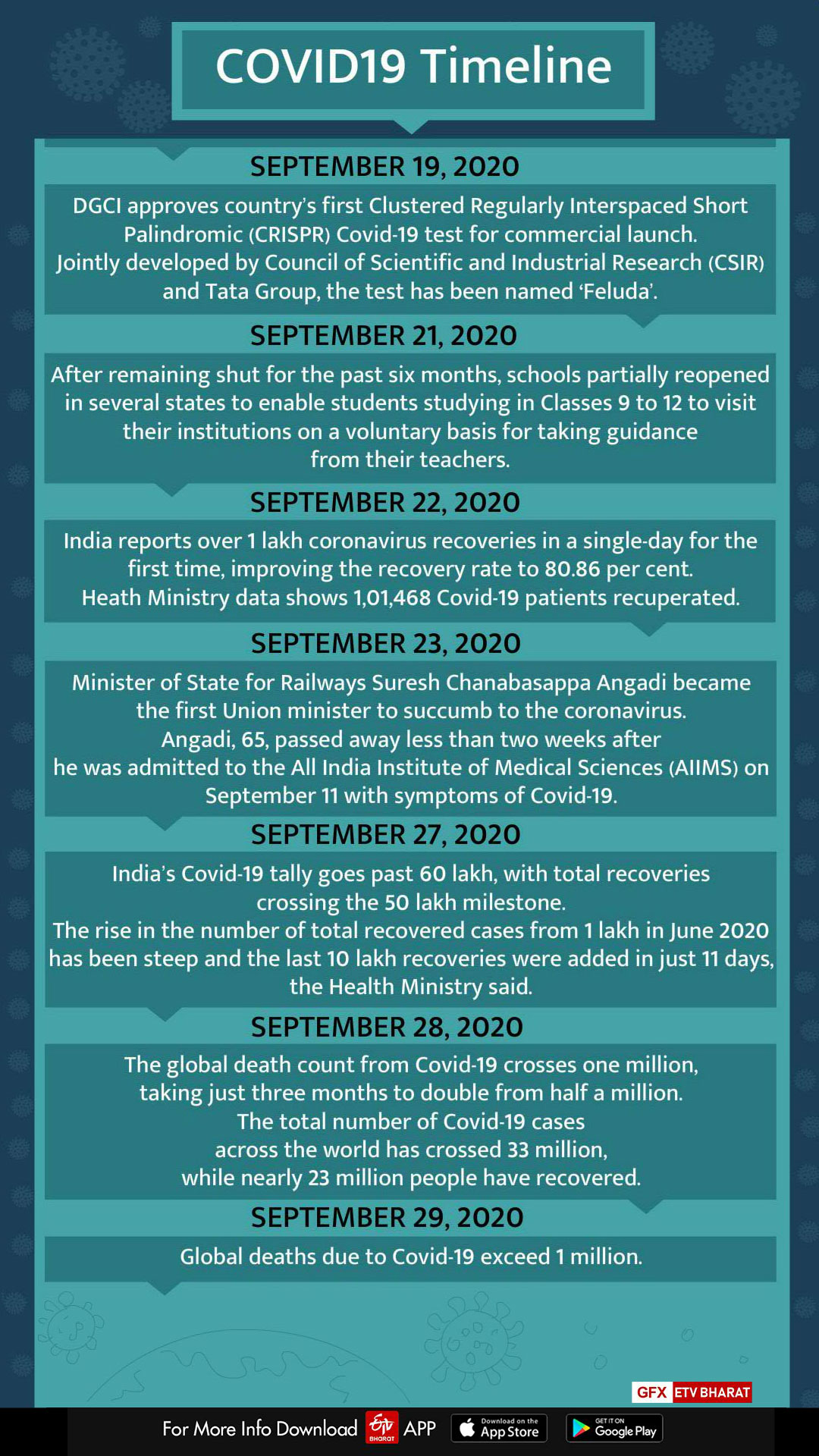
In October, during the festival season, the death toll in India exceeded 1,00,000. But after 1181 deaths were registered on October 1, it declined to 551 by October 31. New cases also came down to 48,000 on October 31 from 85,000 to 86,000 cases. Also, the deaths decreased by 24,000 for the month.
Also read: Tokyo Olympics: Overseas spectators banned due to Covid-19
November: Corona's graph comes down
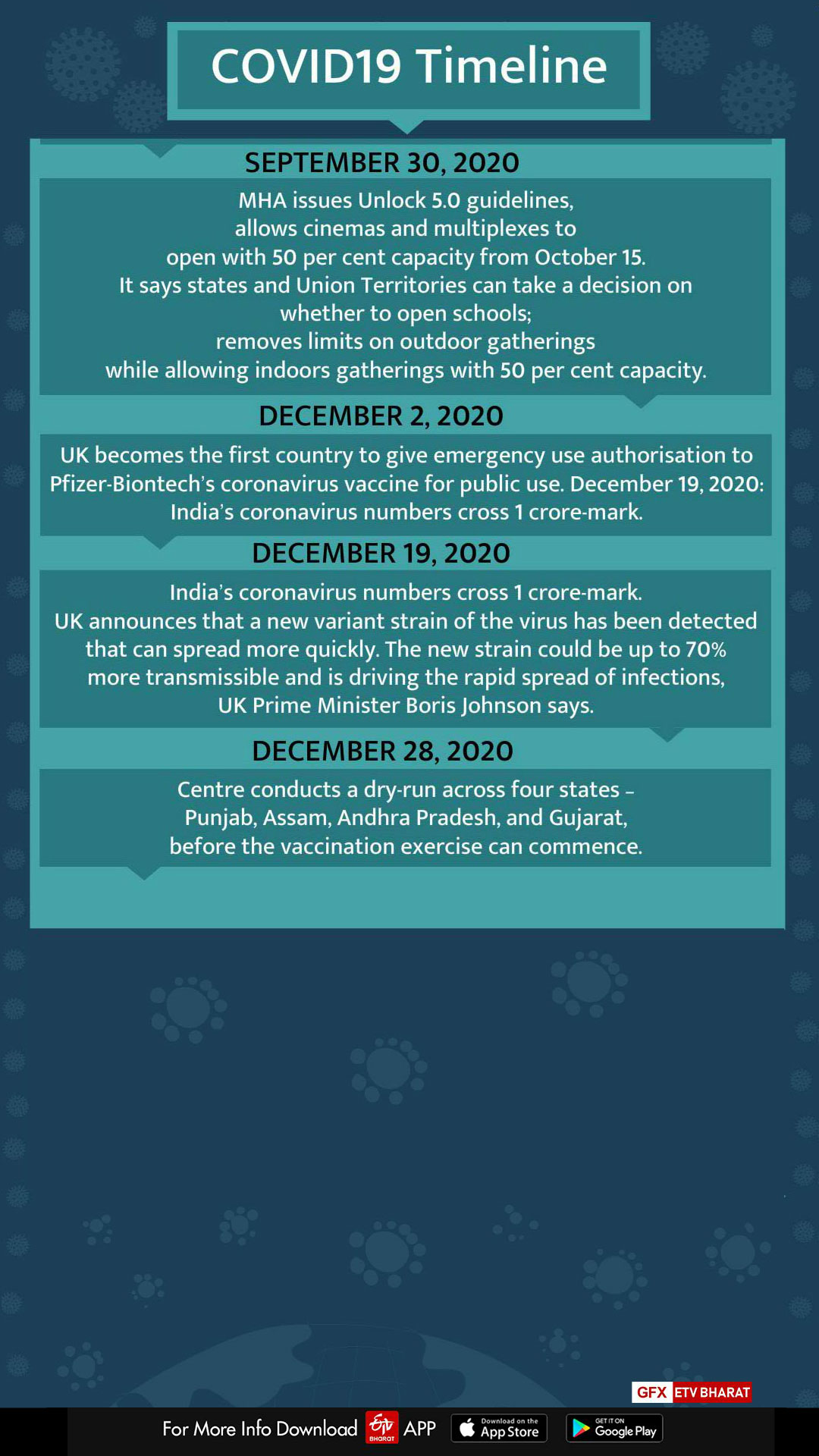
For three months continuously, two million cases were recorded and finally, in November there was some respite. In addition, the daily cases came down from 45,000 to 38,000. Even the death toll came down to 400-450 on a regular basis.
December: Corona cases cross one crore
On December 18, as the corona cases recorded a decline, the total cases in India exceeded one crore (10 million Cases).
Also read: Spike in daily COVID-19 cases, India reports 53,476 new infections
January 2021: From Virus to Vaccine
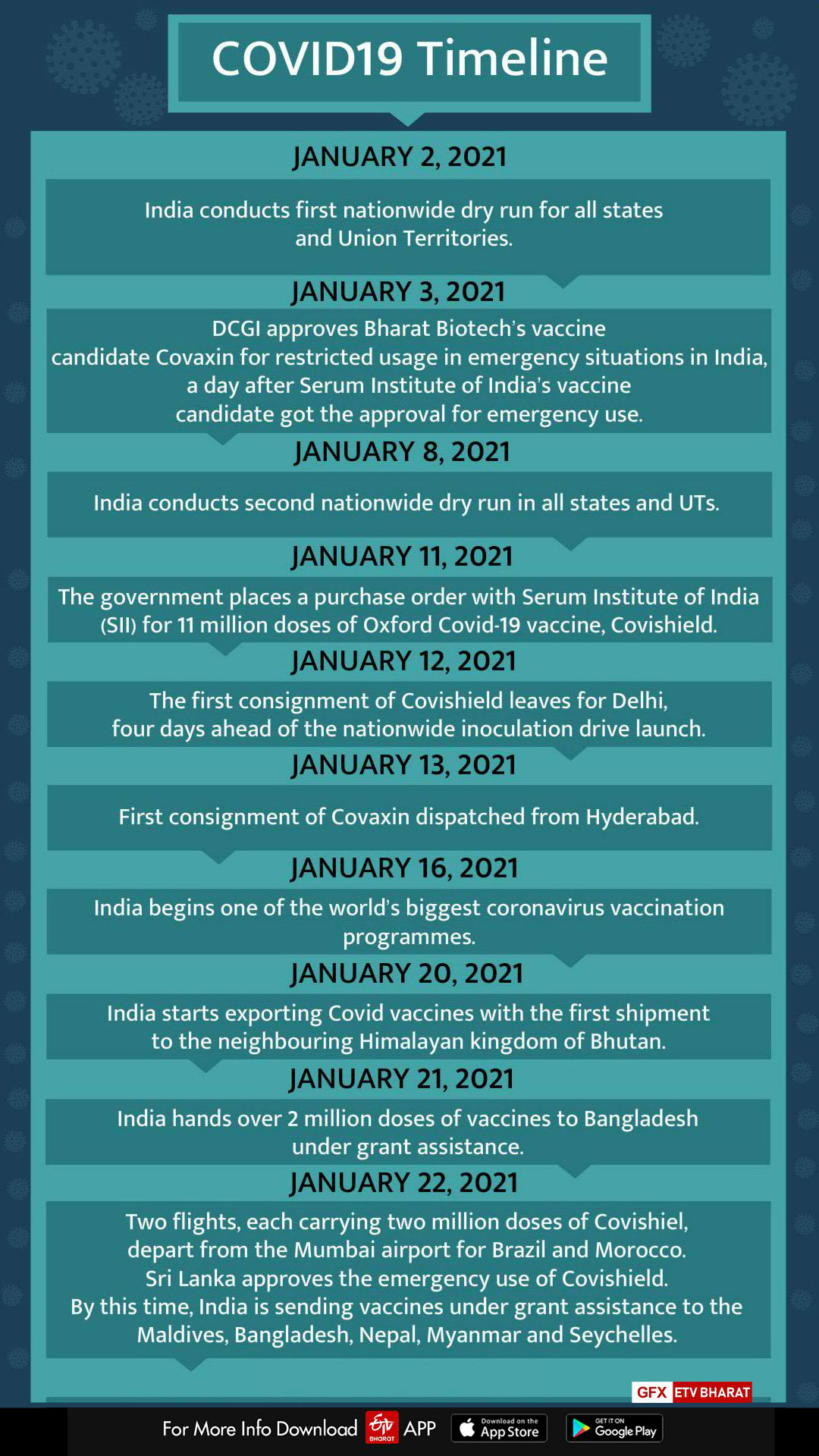
It was finally in January that the Indian government approved the emergency use of the corona vaccine. During this time the cases were on the decline. Even, the vaccination drive was launched in India on January 16. About 33 lakh people have taken the vaccine. Today, India has 10.46% of the world's cases, which were more than 15% at one time.
What India learnt about Covid in a year since lockdown
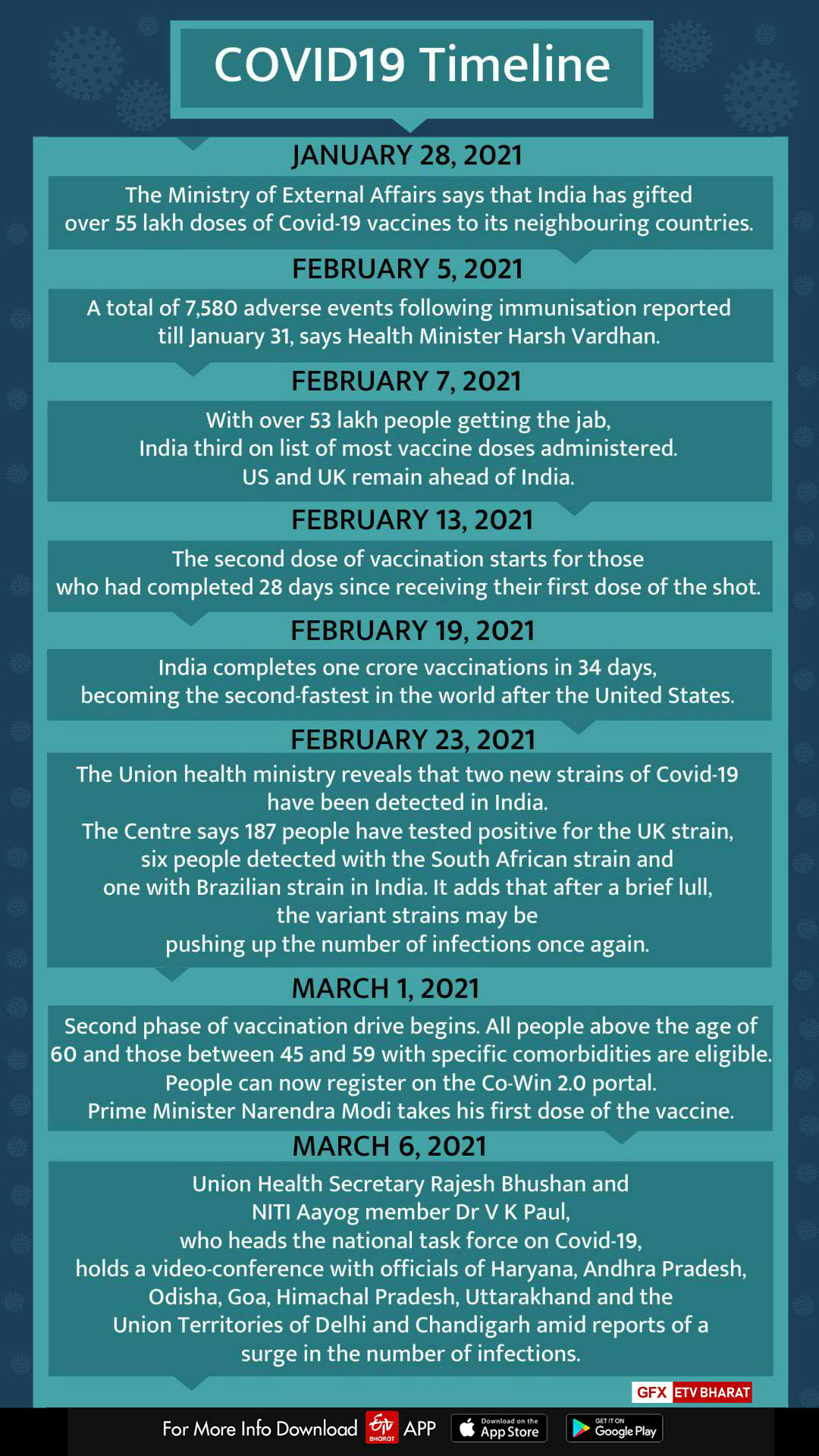
Testing plays a key role in controlling disease - When the WHO called for a 'Test Test Test' credo, the Indian Secretary of Health Research reiterated India's stand of 'Isolate, Isolate, Isolate'.
"One of the very important lessons we have learnt is that when we unnecessarily keep restricting ourselves, as we did in case of testing, without realising the capacity of the system — we crossed 10 lakh tests a day — you end up creating a doubt that persists for a long time. As a government, we should not over centralise. More than our ability to make available beds, tests, vaccines devices etc, what is important is our ability to do a consolidated campaign to convince people," said CK Mishra, former secretary, the Ministry of Environment and Forests.
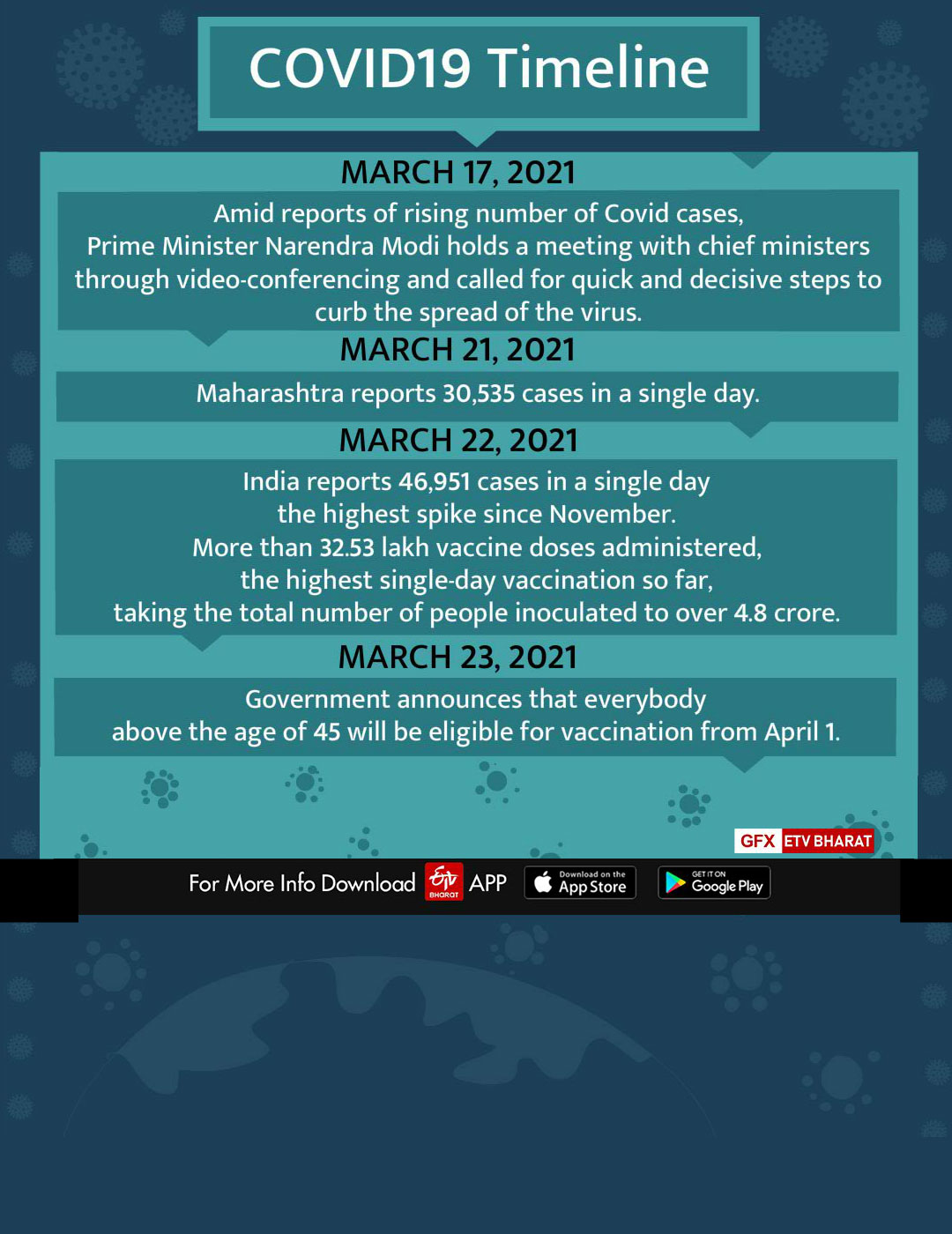
Also read: Impose local restrictions to stop surge in Covid19 cases: Health Ministry to States
Ventilators overrated
Following worries about how India would cope for ventilators to treat its population of 1.3 billion everyone including start-ups manufacturing solar panels, cleaning robots, car manufacturers came forward to manufacture them. Actually, India had around 40,000-50,000-odd ventilators only, with most of them being used in the private sector.
Steroids working better than drugs, therapies
The biggest therapeutic hope in March 2020 was 'Remdesivir' which was sold for $1000-$2000 globally has been revised to a little over Rs 2,000. In addition, plasma therapy came up as an option to passively kickstart the immune system by introducing neutralising antibodies from one Covid survivor to a patient. Now, following a conflicting study between 'Remdesivir' and 'Plasma Therapy', a steroid 'Dexamethasone' which costs Rs 10 per strip of 30 tablets ensures that patients do not suffer from cytokine storm, an overdrive mode of the immune system which often turns fatal.
